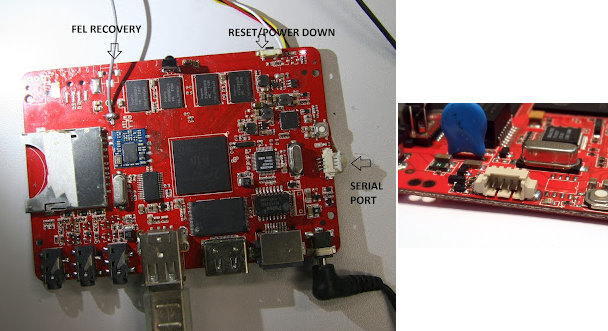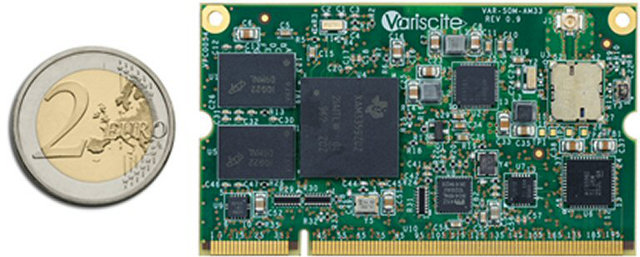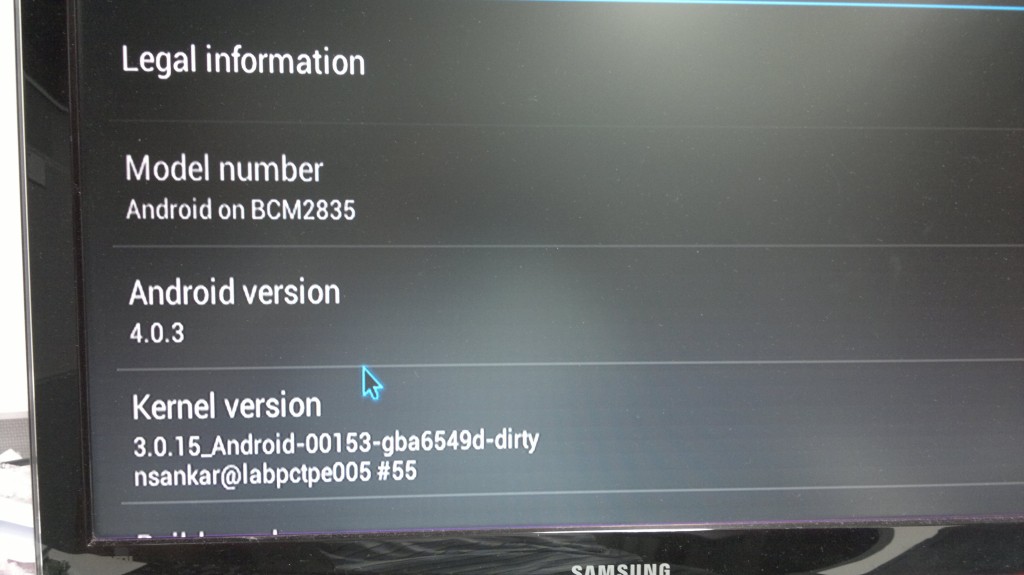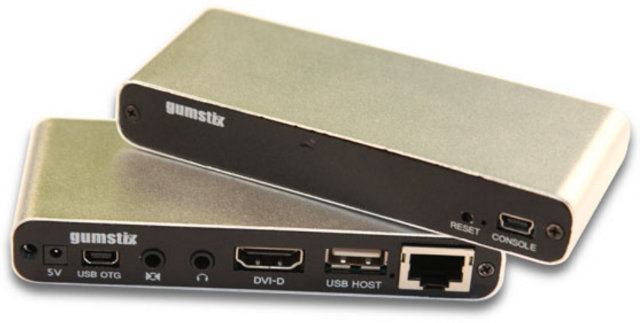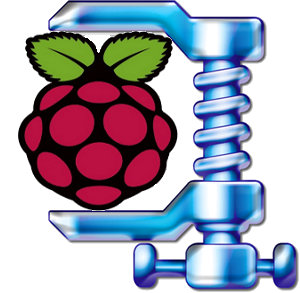The Hackberry “development board” is now available for sale on Miniand. This board powered by AllWinner A10 processor comes in 2 versions: 512 MB RAM version – Available now for $60 1GB RAM version – Available by the end of the month for $65. Both boards features a 4GB Flash, a SDHC slot, 2x USB 2.0 port, 10/100 Ethernet, Wi-Fi, HDMI & composite outputs, headphone & microphone ports and a IR sensor. The good thing is that serial interface and FEL connectors will be soldered on the board for easy debugging and recovery. The FEL recovery port allows to reflash the board using Livesuit. As a side note, Henrik, a developer involved in Allwinner A10 software development, has done some work to reverse engineer FEL USB protocol, wrote a small program to enter into Livesuit mode with an SD card (Go to the bottom of the page section “Forcing FEL […]
AllWinner A10 Initramfs Support and Linaro 12.07 Image
An initramfs is a minimal root filesystem that is loaded at an early stage of the boot process, before the rootfs partition is mounted. This is optional but is now used by many Linux distributions such as Ubuntu in order to speed up boot time among others things. Up to recently, there was no support for this in the AllWinner A10 nightly builds, and there would be lot of error messages due to ureadahead process with Ubuntu, but I’ve changed that by: Using a boot.scr file (U-Boot Script) for each supported device in order to either follow the default init boot method or do an initramfs boot if uInitrd file is present in the FAT partition. Adding a script (a1x-initramfs.sh) to generate and install uInitrd initramfs in the rootfs. The initramfs can’t be generated at build time since the hardware packs are (mostly) distribution agnostic. If you want an initramfs, […]
$39 Variscite VAR-SOM-AM33 SoM Powered by TI Sitara AM335x
Variscite has announced a new system-on-module based on Texas Instruments Sitara Cortex A8 AM335x processors (AM3352 or AM3354) named VAR-SOM-AM33, which sells for as little as $39 US (in large quantities I assume). This SoM is available in commercial and industrial grades, and the company expects the module to be used in applications such as automotive, control systems, lighting, refining and processing. Here are the specs of this module: CPU – Texas Instruments AM335x Processor @ up to 720 MHz withPowerVR SGX530 GPU (AM3354 only) System Memory – 256MB 606MHz DDR3 Storage – 128 to 512MB SLC NAND Flash Display interface – LCD interface – Parallel RGB Supporting 1400×1050 24bit and4/5/8-Wire touch panel interface Audio – Line-in, line-out, stereo headphone out, digital microphone, analog microphone and S/PDIF Out Connectivity: 10/100Mbps Ethernet PHY 10/100/1000Mbps RGMII Wi-Fi 802.11 b/g/n (via TI WiLink 6.0) Bluetooth V4.0 + EDR (via TI WiLink 6.0) Interfaces: 2 […]
AllWinner A10 Based H6 Android 4.0 Netbook Sells for $140
I’ve been tipped yet another time by one of my reader (Thank you Alex!) about an interesting low cost ARM device. H6 Netbook is powered by AllWinner A10 processor with 1 GB RAM and 4GB Flash, features a 10″ display (non touch) and runs Android 4.0.3. I wrote about the Sunlike UMPC-1021 in April, but the H6 is the first AllWinner A10 netbook – that I know of – that is available for retail. Here are the specs of this ARM netbook. CPU – AllWinner A10 @ 1.0GHz (Cortex A8;) with Mali 400 GPU System Memory – 1GB RAM Storage – 4GB Flash + SD Card slot (up to 32 GB) Display – 10″ LCD Display (no touchscreen) with 1024×600 resolution. Connectivity 10/100M Ethernet Wi-Fi 802.11 b/g/n built-in 3G support via external 3G dongle: E1916, ZTE AC2736, HUAWEI E1750, HUAWEI EC122, HUAWEI EM770W… USB – 3x USB 2.0 Host ports […]
How To Root CX-01 Android mini PC
CX-01 is a cool low cost Android mini PC (as low as $40), but unlike many other Chinese Android device it is not rooted. Here are the instructions to root it: Download Unlock Root http://www.unlockroot.com/. NB: The download link does not appear to work right now, but the filename is unlockroot23.exe, so here are some alternative untested download links. Find Unlockroot\driver\android_winusb.inf in the directory where you install Unlockroot Open the file in a text editor, and add the following lines: For Win 7 (64-bit): [Google.NTamd64] 64-bit] ;TCC8920 %SingleAdbInterface% = USB_Install, USB\Vid_18D1&Pid_DEED&MI_01 %CompositeAdbInterface% = USB_Install, USB\Vid_18D1&Pid_DEED&Rev_0231&MI_01 For WinXP (32-bit): [Google.NTx86] ;TCC8920 %SingleAdbInterface% = USB_Install, USB\Vid_18D1&Pid_DEED&MI_01 %CompositeAdbInterface% = USB_Install, USB\Vid_18D1&Pid_DEED&Rev_0231&MI_01 Connect CX-01 to your PC via USB, it should then detect your new device. If it doesn’t simply press “fn” key on CX-01 TV Stick. Select the driver that you edited in Unlockroot\driver\android_winusb.inf Once the driver is installed, run unlockroot Press ROOT, then […]
Android 4.0 Running on Raspberry Pi with Hardware Acceleration
Eben of the Raspberry Foundation announced that a developer (Naren) has been working on a port of Android 4.0 for the Raspberry Pi, and the port already appears to be a an advanced stage with hardware-accelerated graphics and video working smoothly. The only major issue is the lack of support for AudioFlinger. The demo below shows Android 4.0 running in the Pi without audio as it’s not implemented yet. The UI is relatively smooth, and video playback and YouTube video streaming work pretty well. This is quite impressive considering the Raspberry Pi has less than 256 MB of memory available to the system, and I suppose they must have made some compromises to make this work. Moreover, I would expect that many applications won’t run properly due to the ARMv6 processor and low system memory. The source code and binary release are not available yet, as this port uses a […]
Gumstix Waysmall Silverlode Linaro Ubuntu Computer based on TI Sitara AM3703
Gumstix has just announced the Waysmall Silverlode computer, a small form factor device running Linaro ARM optimized Ubuntu and designed for developers of commercial and industrial applications such as digital signage players and remote servers. It’s based on Overo EarthSTORM Computer-on-Module (Texas Instruments Sitara AM3703 @ 1 GHz, 512MB Flash and 512MB RAM) and consumes less than 2.5 W. Here are the specs of the device: Processor Texas Instruments Sitara AM3703 processor (ARM Cortex-A8 ) @ 1 GHz 800 MHz is recommended for reliable performance System Memory 512 MB RAM Storage 512 MB NAND flash microSD card slot Video Output HDMI (DVI-D) Audio I/O Stereo Audio In /Out jacks Connectivity 10/100Mb Ethernet USB USB Host, USB OTG and USB Console Connectors 2 x 70-pin AVX connectors 1 x 27-pin Hirose camera connector Battery holder for 6mm rechargeable coin Dimensions 11.0 x 4 .4 x 1.8 cm Power 5V The computer […]
84 MB Minimal Raspbian ARMHF Image for Raspberry Pi
Many embedded systems applications do not require a desktop environment or graphical interface on the screen (e.g. server), and you may want to only install the files you really need on the SD card either to reserve as much space as possible for data and/or your program or to reduce costs. After searching for a minimal image based on Raspbian ARMHF distribution for the Raspberry, I could only find Linux Systems minimal image based on the Alpha version of the Raspbian Wheezy. Their compressed image is 109 MB in size, has a custom kernel, sshd and ntpd are enabled, but the wireless tools were deleted, and at the time the swap was located in another partition instead of a file inside the rootfs. The uncompress rootfs is about 414 MB (as reported by df -h when mounted as a loop device). I decided to prepare a minimal image myself based […]


